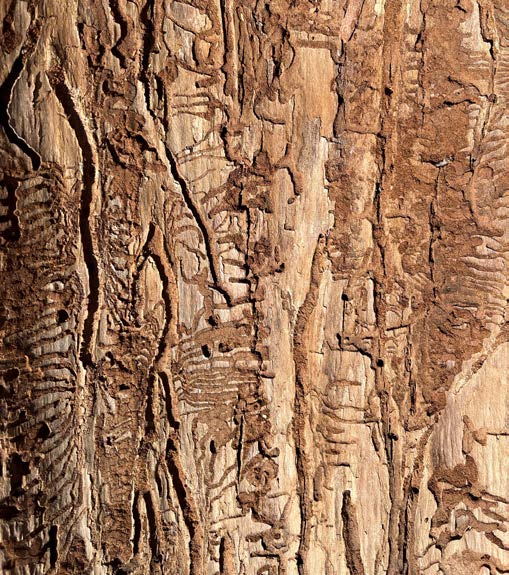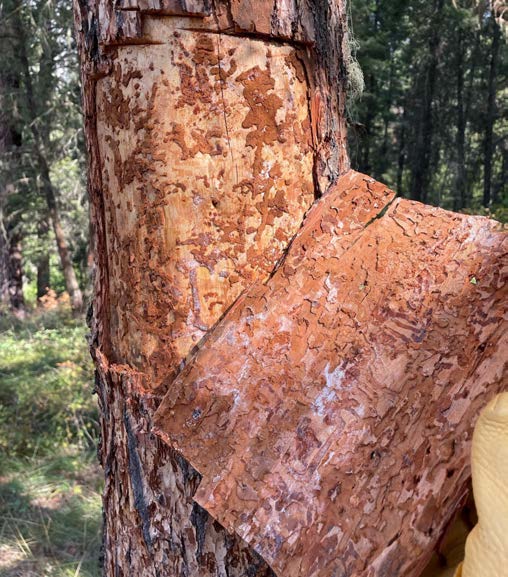What's Killing The Douglas Fir?
By B. Williams and A. Gannon — Department of Natural Resources & Conservation (DNRC)
Pockets of dead Douglas-fir are increasingly familiar on hillsides around western Montana. Having been through landscape-scale bark beetle outbreaks, we generally assume these dead trees have been attacked by Douglas-fir beetles. These beetles bore into weakened, damaged, or unhealthy trees and leave behind accumulations of orangish brown dust in bark crevices. Below the bark, beetles create distinct vertical galleries, parallel to the wood grain and fanning out in a feather-like pattern (Image 1).

Image 1. Photo credit: C. Foelker
Recently however, the prevalence of another insect attacker, the flatheaded fir borer, has been on the rise. Its presence can be much more subtle. Flatheaded fir borer infestations may be most obvious in the fall and winter, when woodpeckers chisel off patches of bark while hunting the larvae. The underlying tunnels are wide and meandering compared to the organized galleries of the Douglas-fir beetle (Image 2).

Image 2. Photo credit: C. Foelker
A 2023 survey of 15 pockets of Douglas-fir mortality in western Montana by Forest Service personnel revealed that while 85 percent of the sites had evidence of Douglas-fir beetles, a full 100 percent had evidence of the flatheaded fir borer. This phenomenon is not limited to Montana. Other states in the Intermountain West are reporting similar mortality and just north into Canada are stark examples of extensive woodborer damage. The data raise questions about the uptick in woodborer activity. Was it triggered by long term drought and increasing temperatures creating tree stress? Or is it a result of a more specific stressor — the “Heat Dome” of 2021? Is this a one-time event or should we expect continued mortality?
Regardless of the cause, prevention is the most reliable management option. Packets of the pheromone MCH used to repel Douglas-fir beetles are NOT effective against woodborers. The best way to limit tree mortality is by promoting tree vigor and resilience through sound forest management.
